As I noted in the last few posts, Guatemala and the Mexican state of Chiapas have some dances and dance characters in common, probably due to their shared history. More broadly, some of the dances of Guatemala are found in many of the Mexican states. These include the dances of the Moros y Cristianos, the Conquest, and dances with characters dressed as Toritos (bulls). In my post about the Patzcar Dance I included one of the small Torito masks that appear in that performance. Today I will feature three larger Bull masks from another Guatemalan dance, El Baile de los Toritos. However, because the masks worn by the human figures in that dance can be interchangeable with the masks used in the Conquest dance, I will talk about the human masks from both of those dances in next weeks post. Here is a Torito mask; it is quite handsome with the relief-carved curls above the eyes.
I obtained this mask from Spencer Throckmorton in 1995.
This bull has lost his horns. The height is 9 inches, the width is 6 inches, and the depth is 3½ inches.
The back of the yellow Torito mask has been enlarged along the sides, obliterating the staining in that area that was caused by lengthy use. It carries a morería mark- ET.
Here is a YouTube™ video of the Toritos dance in Santa Eulalia Guatemala, in 2013.
https://www.youtube.com/watch?v=qjlQgGHV190
And here is another from Coatepeque, Guatemala.
https://www.youtube.com/watch?v=wsCNocRiAio
The next Torito has dramatic stripes, a common feature of the bull masks from the central highlands of Guatemala in the past.
I got the red and black striped Torito from Gil Hampton, a folk art dealer in Santa Fe, New Mexico, in 1995. Note the small cross on the forehead. Joel E. Brown shows a very similar mask (2008 Volume 2, page 154) in the collection of the Fowler Museum at UCLA; the Fowler mask also has that small cross.
As we will see more clearly in another mask that follows, the red swirl connecting the mouth and one nostril is meant to portray the bull’s tongue.
This mask is 8 inches tall, 6 inches wide without the horns (1o inches with), and 3½ inches deep (without the horns).
The horns were attached in carved slots at the top of the mask. In the context of an old infestation with boring insects, that area of the mask evidently became weak and broken, so it was reinforced by a piece of tin from a tin can. This created a comfortable surface for the dancer’s forehead.
The last of these Toritos masks is the most vivid. There are two crosses. The tongue is carved in relief, as are the locks of hair on the forehead, and the teeth. The glass eyes bulge from their sockets. I bought this mask from Spencer Throckmorton in 1995.
Although it is common to find old Toritos masks that have small holes at the ends of the horns, it is rare to find such a mask with anything attached to the horn tips. Therefore I was pleased in find a photo in Guatemalan Masks: A Second Portfolio (Joel E. Brown 2011, page 90) that had small brass bells attached there. That mask, which had been collected in Totonicapán in 1921, carries the MC morería mark.
This mask is 8 inches tall, 6½inches wide without the horns (10½ inches with the horns), and 3½ inches deep.
There is no morería mark, but obvious staining from moderate use.
In next week’s post I will discuss masks that could serve Vaquero dancers in the Toritos dance, or they could function as Spanish soldiers in the Conquista dance.

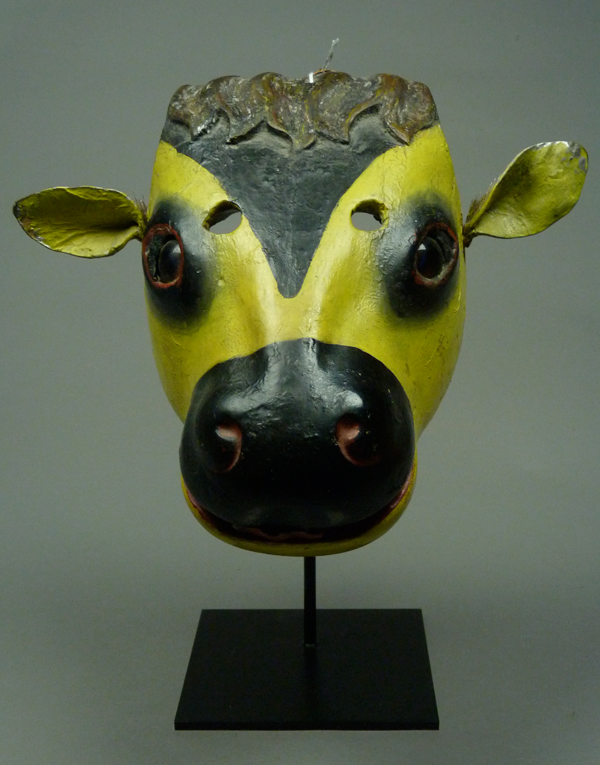
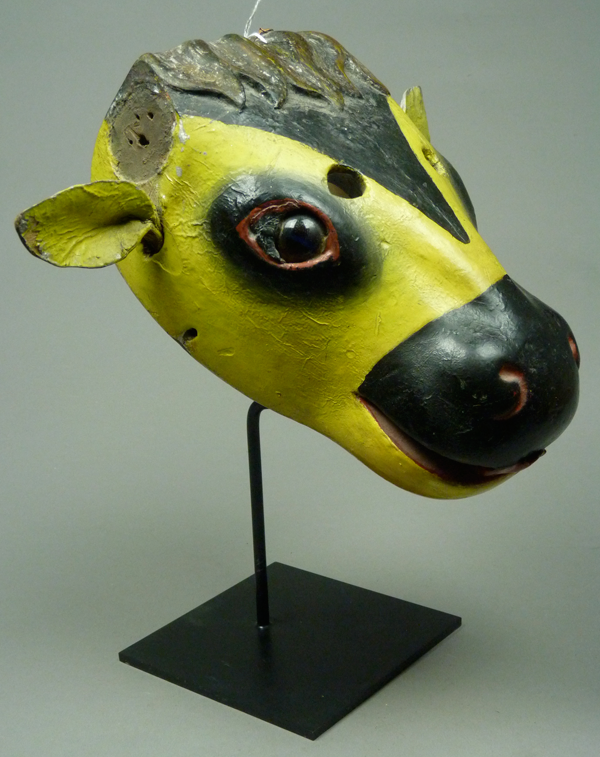
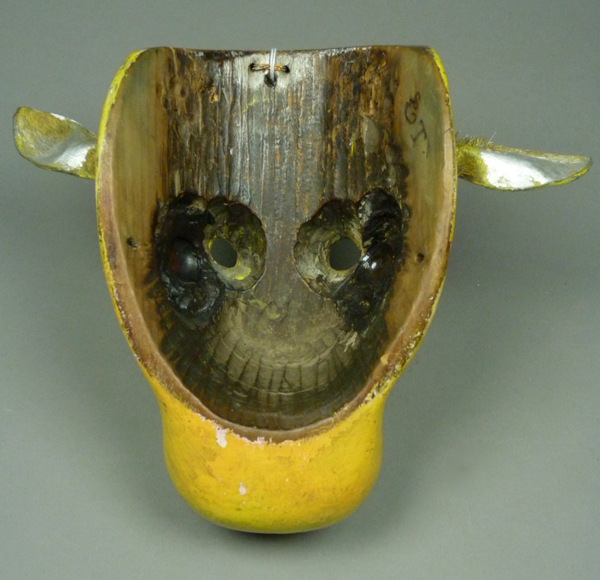
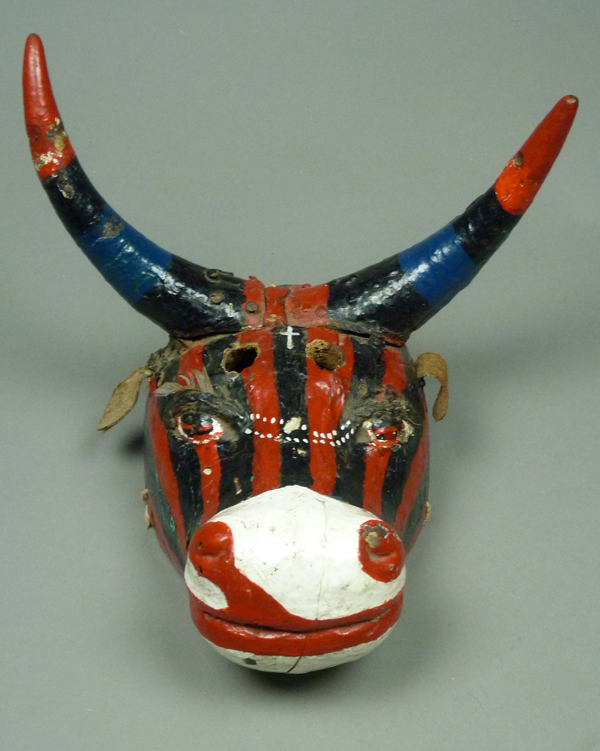



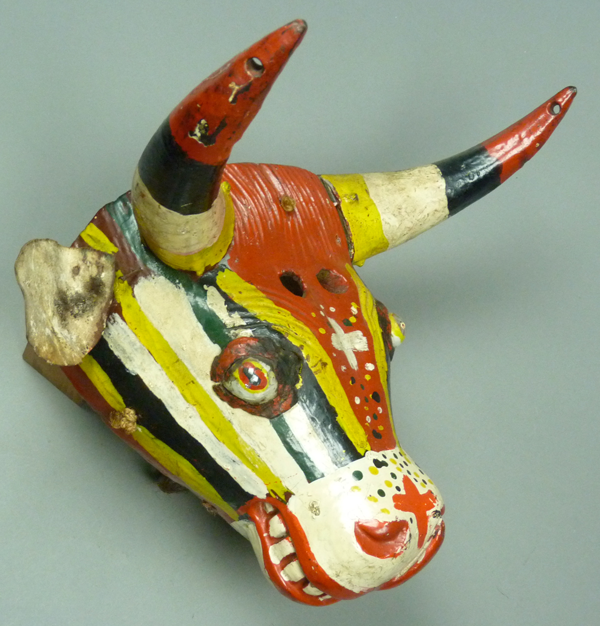
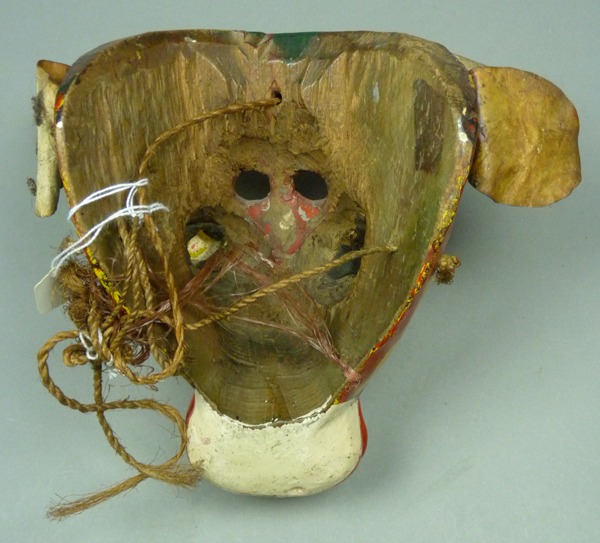
2 comments on “The Toritos Dance In Guatemala”